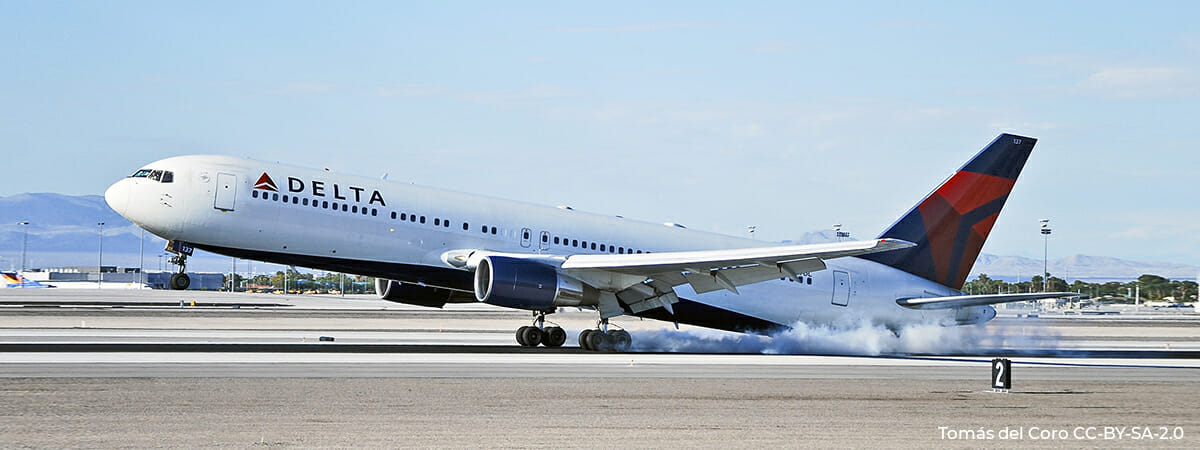It is widely accepted that within the aeronautical industry, safety is a top priority. Every detail, every aspect of the flight – from take-off to landing – is important when it comes to ensuring flight safety and efficiency. One of the challenges faced by aircraft during take-off or landing is the tailstrike, an event in which the underside of the aircraft’s tail touches or scrapes the ground. However, thanks to preventive measures like the tailskid, it is possible to minimise this risk and maintain flight safety.
The aeronautical industry continues to make strides towards continuous improvement in safety, driven by innovation and cooperation.
A number of factors can cause a tailstrike. Excessive load on the aircraft, improper speed or incorrect flap configuration and tail angle are just some of the possible causes of this undesirable event. A tailstrike can jeopardise the safety of the aircraft, so it is essential to address and prevent this issue, as it could have serious consequences.
This is where manufacturers play a vital role in aircraft design with regard to tailstrike prevention. They have developed preventive measures, and one of them is the tailskid, which is a physical part located at the rear of the fuselage of some aircraft. It acts as a kind of “skid”, extending downwards from the rear of the aircraft, and it may come into contact with the ground during take-off or landing manoeuvres. Its main aim is to protect the underside of the aircraft and reduce the risk of damage in the event of a tailstrike by absorbing the force of the impact and preventing the tail of the aircraft from hitting the ground.
There are different types of tailskids, to suit different types of aircraft and their design specifications. Some aircraft have a reinforced tailskid. Others have a different tail shape that emulates it and decreases the likelihood of a tailstrike. However, it should be noted that a tailskid is not a cure-all solution that will prevent any tailstrike. In addition to the measures taken by manufacturers, it is also essential for pilots and air traffic controllers to play their part in ensuring safe flights.
Pilots play a key role in preventing tailstrikes. Before each flight, pilots carry out extensive planning, including checking that the aircraft is suitably loaded. An excessive load can increase the risk of a tailstrike, so it is important to ensure that the aircraft is properly balanced. Moreover, pilots must calculate the appropriate speed and altitude for each phase of the flight, taking into account the characteristics of the aircraft and the environmental conditions. A proper approach to operating the controls and flight configurations is also crucial to avoid situations that are likely to lead to tailstrikes.
Cooperation between pilots and air traffic controllers is also essential to prevent tailstrikes. Air traffic controllers are responsible for providing precise instructions to pilots and coordinating air traffic efficiently. During take-off and landing, air traffic controllers must ensure that the conditions are safe, taking into account factors such as aircraft separation, wind speed and the availability of a runway that is suitable for the aircraft in question. Clear and effective communication between pilots and air traffic controllers is vital to avoid situations that could lead to a tailstrike.
In short, a tailstrike is an event that can jeopardise flight safety. However, thanks to preventive measures such as tailskids and cooperation between aircraft manufacturers, pilots and air traffic controllers, it is possible to significantly reduce the risk of tailstrikes. The tailskid acts as a protective barrier to help safeguard the integrity of the aircraft during take-off and landing. Although it is not a cure-all solution that will prevent any tailstrike, its presence on certain aircraft and its customised design are a good illustration of the aeronautical industry’s commitment to safety.
Tailstrike prevention is a joint effort that requires the cooperation and commitment of everyone involved in the aeronautical industry. Manufacturers must continue to innovate and improve aircraft safety systems, while pilots and air traffic controllers must keep up-to-date with the latest safety practices and procedures.
Tailskids and other preventive measures are only part of the range of practices and technologies that are continuously being deployed to maintain excellence in aviation safety.
The aeronautical industry continues to make strides, driven by innovation and cooperation and tailstrike prevention systems are constantly being improved. A sustained focus on safety procedures, ongoing training of professionals and investment in cutting-edge technologies will continue to enhance safety in aviation, ensuring safer and more reliable travel for everyone who uses air transport.



